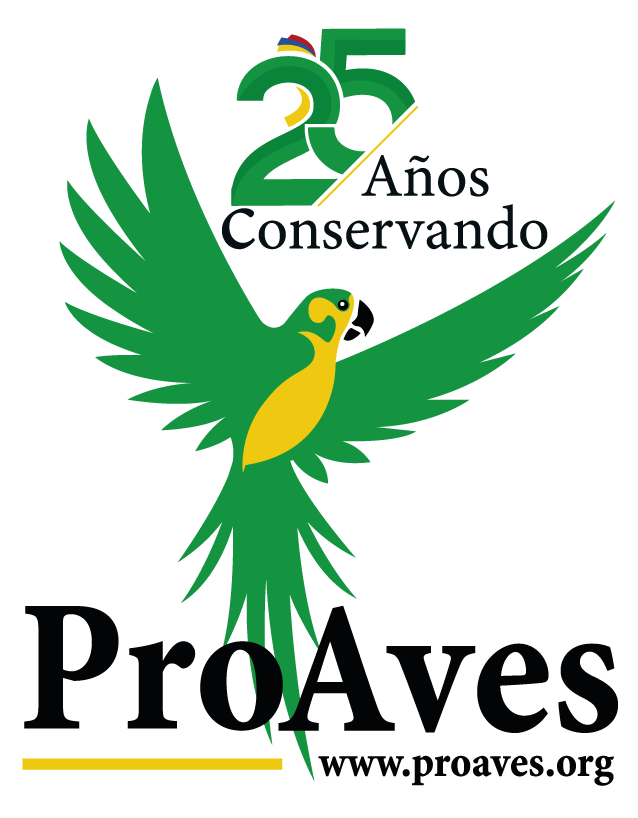Monday 27 September 2010.
In the Colombian Pacific coast, about 45 miles within the jungles of Cauca, some examples of the La Brea Poison Frog (Oophaga occultator), first described in 1976 by Myers and Daly were found. Despite having been described so many years ago, many details about its behavior, reproduction and habitat status for reasons of public order were unknown. The significance of the finding is due to the collection of data on the species and its distribution, in addition to warning about the state of deforestation of their habitat with a view to conservation.
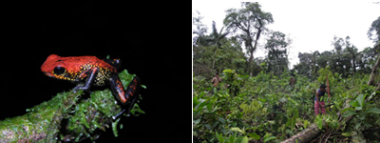
La Brea poison frog (Oophaga Occultator) – Environment deforested. Around about the occultator sang all morning.
The name of this species (occultator) was given because of its “hidden” conduct in the middle of the jungle. The first few times it was seen in the wild (1975) it was found that preferred the upper parts of trees and branches, where it mimicked the environment of the forest. It was said that it sang at heights over 1.50 cm and their song is rarely heard. However, during this visit they could be seen singing up to 10 cm off the ground, in severely deforested areas and in different locations to La Brea. Although some scientists have been able to enter the area in years past (in the 90s and early 2000), nobody has seen any more pictures of this magnificent and little known species in its natural environment: the jungles of Colombia.
{youtube}vY3yjcPEVy8|425|344|1{/youtube}
Among some risks to the extinction of Oophaga occultator are:
Illicit crops: Even before the drug bonanza of the 90s, even to this day, this area of Cauca hundreds of hectares of forest have been cleared to plant coca indiscriminately. Fueled by easy money and anxiety and by violence that seems not to be letting up, the people (indigenous and Afro-Colombians) for several years saw their primary method of support in this lucrative business. The crops became so great that the state sent planes with glyphosate to destroy the crops (and incidentally killing off surrounding fauna and flora).
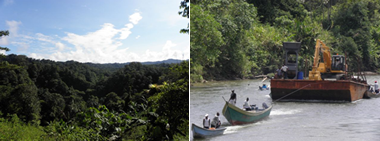
Coca cultivation (left) expanding into the jungles of the river Guanguí (right).
Backhoe for mining in the river Saija
Mining: 25 backhoes and dredges arrived at Timbiquí to tear up the edges of the river in search of gold in early June. Thanks to the efforts and protests of the civilian population of Timbiquí, the dredges were expelled from the village, avoiding the destruction of the area near the village. However, these dredges only changed direction and began to climb the Saija River in search of gold on the slopes of river. Mining activities destroy the environment with their irresponsible and devastating activities.
Trafficking of species: During the 80s and 90s this frog was trafficked to countries in Europe and North America, to be bred in captivity and be marketed in the world of collectors. A cargo was taken to the United States in 1997, along with other species of frog in the area such as Phyllobates terribilis and Phyllobate saurotaenia, but the chances of breeding and reproduction in captivity are very rare, making it a target for traffickers who come to Colombia to take them away illegally.
Fortunately for the frogs, the Saija River area is not safe now for dealers (nor for researchers), because 3 illegal armed groups, including FARC, the ELN and Los Rastrojos (paramilitary group) are vying for control of this strategic corridor for drug trafficking.
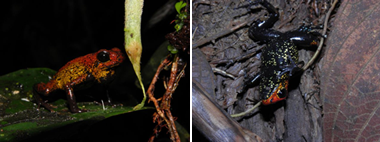
The villagers are indigenous Emberá, who have been in travel status for 2 years, living in cramped conditions in a large communal house with more than 600 indigenous people, victims of the violence and the constant threats from insurgents. This is a community that originally used the frogs (Phyllobates terribilis) to poison darts and for hunting, but this activity has been discontinued by the villagers today. We hope that the life and culture of these indigenous peoples as well as the great diversity of the Saija area can be preserved over time and that we will not have to remember them only through books and old photographs.
With the support of:
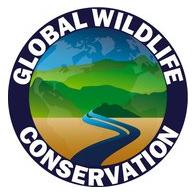 |
